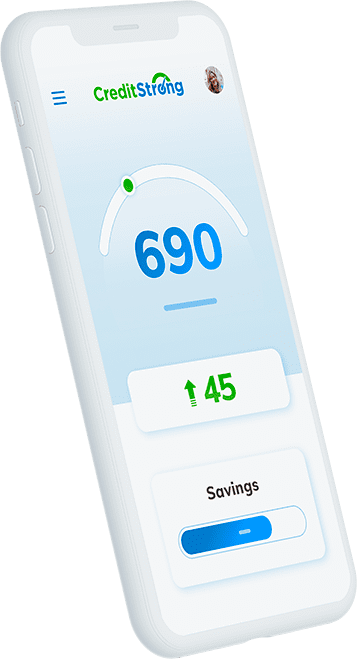What Is Trade Credit and How Does It Work?

Build strong business credit
with your EIN
Businesses rely on many types of funding to improve cash flow and keep growing their operations. One of these funding types is called trade credit, a form of vendor financing that gives customers more time to pay for their orders. Learn more about how trade credit works and what benefits it offers companies of all sizes.
What Is Trade Credit?
When you purchase something from a vendor, you may be given additional time to pay instead of processing your payment upon the point of sale. This business-to-business (B2B) invoicing agreement is also called trade credit.
You don’t need cash up front, and you can pay for your order according to the terms of the financing agreement.
Trade credit usually comes in 30-day, 60-day, or even 90-day invoicing terms, although the most common arrangement is 90 days. When you make your initial purchase, you’ll get an invoice with a due date of when the trade credit expires. Anything left unpaid on your invoice would be due in full at that time.
There are typically no finance charges, fees, or interest when you use a trade credit line. However, there may be a limit to how large an outstanding invoice you can have. Newer businesses usually get smaller trade credit limits and less time to pay.
A 30-day trade credit is most common for brand new, unproven businesses working with a trade credit vendor for the first time.
How Does It Work?
At the time you make your order, the vendor may offer you trade credit or give you an application to apply for it. When approved, you’ll have a trade credit limit that you can’t exceed and may choose to put some or all of your order on that credit. Whatever you finance, you don’t have to pay right away.
When the trade credit terms expire (usually in 30-90 days) your invoice is considered due in full. Whatever you haven’t paid needs to be paid.
Otherwise, the vendor can charge late fees, interest, or even put the unpaid balance on a method of payment you chose at the time of account setup (like another credit card).
The appeal of trade credit is that buyers can get goods ordered and even shipped to them right away, without needing to come up with the money to pay for them immediately.
In the time between when the order arrives and when payment is due, it’s possible to sell part or all of that order, giving retail and wholesale businesses more liquidity and freeing up additional cash.
As an alternative to trading credit terms, some vendors offer an early payment discount for invoices paid early or paid in full at the time of order.
Who Uses Trade Credit and Why?
Vendors offer trade credit to ensure that their customers can afford to make purchases even if they have difficulty getting other forms of credit, like a business credit card or an SBA loan. This alternative keeps orders coming in but comes with less risk than open-ended credit or loan financing.
Any business that needs more time to pay and either likes the idea of avoiding traditional credit or cannot access traditional financing may enjoy trade credit terms.
Trade credit is also preferable for sellers who might lose out on business by requiring upfront payment. By even delaying invoice due dates by just 30 days, the goods or services purchased can be used to help a business generate revenue from its own customers, so you’re paying for the purchase with the value it has created, rather than in advance of a business seeing that value. It’s a form of financing that’s simple to use and it can create loyal customers over time.
When choosing between a company that extends trade credit and one that doesn’t, the 30-day invoice terms may be enough to win the bid.
Wholesale companies often use trade credit offers to attract buyers to their newest products or trade partners. In fact, it’s a popular marketing method that’s helped get traction for lines of business that may otherwise not get much notice.
Trade lines make seller offers more competitive, give buyers more working capital flexibility, and can often be a deciding factor in whether purchases are made or not.
What Are Net Terms?
Anytime you pay for your goods or services after you take possession of them (or receiving the service), you are using net terms.
Whether it’s paying for a meal after you’ve consumed it at a fancy restaurant or by paying a $1,000 invoice for construction supplies a full 30 days after you ordered them, net terms give businesses a little flexibility and make it easy to manage cash flow.
Common examples of net terms include:
- Net 30 – the invoice is due in full within 30 days
- Net 60 – the invoice is due in full within 60 days
- Net 90 – the invoice is due in full within 90 days
These are just the most common net terms, however. Some businesses may expect payment due within a day or two, while others can give you many months to slowly pay off your bill. (Unpaid invoices are often called “trade receivables”.)
Before you ever do business with a new vendor for the first time, ask about their payment requirements and get it in writing, if possible.
You should also ask what happens if the bill is paid late. Will you get another invoice with a late fee? Will the balance remaining be charged to a credit card? Never assume that you can push off a late invoice to another day and ask about any applicable delinquency penalties.
Why Do Businesses Offer Net Terms?
Offering net terms as a business credit option can help sellers attract new buyers. If a business is choosing between two similar wholesalers that sell almost the same thing, but one gives you an additional 30 days to pay, it’s fair to assume the more flexible vendor may be your new favorite.
They know that traditional financing can be hard to get, especially for new companies. Trade credit, while not long-term, is better than nothing and can significantly ease some of the financing pressure a new company may have.
In addition, some vendors give you a discount for paying early while still providing the option to pay later. This is usually a percentage of the total bill due. An invoice that states 2/10, n/30 implies that you can get up to a 2% discount off the total of your invoice if you pay it within the first 10 days. It’s also common to get a late fee for not paying on time.
When you figure out the difference between the discount and the late fee price, it’s easy to see that paying on time or even early can offer significant financial benefits if your business has the cash flow to do so.
What’s the Best Way to Use Trade Credit?
Since the clock often starts on your invoice the second you place an order, you won’t want to order products until you are ready for the 30, 60, or 90 payment terms to start. Make sure you know when your clock starts – trade credit usually starts when you complete an order, however, not when the order ships.
It could still be a week or two before you receive the products. This means that you would only get to enjoy or resell products bought with trade credit for the time that’s left between the arrival of your order and the payment deadline. Be sure you are planning for order processing, fulfillment, and shipping times when placing an order for the purpose of using trade credit.
Also, remember that too much of a good thing isn’t always a good thing! Having excess inventory on hand may make it difficult to move enough product to pay your invoices, even if it reduces inventory orders. Be careful with ordering a certain number of items to get a cash discount; if it’s more than you need, the discount won’t be worth it.
Use a trade credit account to reduce cash flow crunches, not as an excuse to overspend.
How Can Trade Credit Help in Building Credit?
When you use a trade credit successfully, the vendor may report your on-time payments to a business credit agency, like Experian or Dunn & Bradstreet. This can help you build credit and increase your reputation as a good credit risk over time.
Also, because trade credit gives you more time to pay for the things you buy, it’s possible to use the improved cash flow to pay other bills. If you use it to pay off a business loan or credit card, this can have positive credit effects.
On the other hand, if you don’t handle trade credit well and wind up making late payments, it could cause the vendor to report the negative behavior to those same business credit agencies.
Over time, this unpaid balance could become bad debt, which is certainly not what you want as a growing company.
How Can CreditStrong Help in Building Credit?
Trade credit is a form of business credit, but it’s not the only way to build your credit over time. Another way is a CreditStrong Business credit builder loan, which reports your on-time payments to business credit bureaus. You start by taking out a loan from CreditStrong, which is deposited into a business savings account secured at Austin Capital Bank, the 5* rated community bank behind CreditStrong.
As you repay the loan over time, your payments are reported to the major business credit agencies so that you can create and then raise your business credit score. There’s no penalty for paying back the loan early, either.
It’s an easy way for newcomers to business credit to start creating a business credit profile for future success.
Whether you are a local mom-and-pop shop or you do international trade with 1000s of SKUs, trade credit financing is just one way to free up cash and maintain inventory during tough times.
This short term finance solution isn’t for everyone, however, do your research to see if it’s right for a business owner like you.
CreditStrong for Business is the only 0% interest business credit builder in the nation
